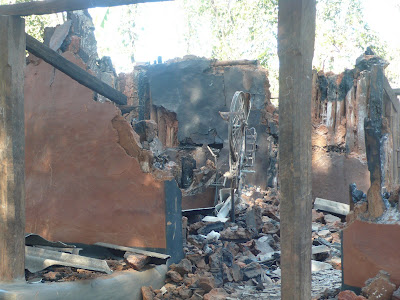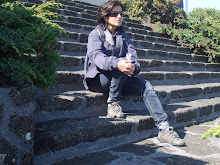 David Kramer, Assistant Secretary of State in the Bureau of Democracy who visited Ethiopia.
David Kramer, Assistant Secretary of State in the Bureau of Democracy who visited Ethiopia.“I didn’t go there wagging my finger intending to lecture. I went because we want to see Ethiopia succeed.” David Kramer, Assistant Secretary of State in the Bureau of Democracy, Human Rights and Labor said at the Center for Strategic and International Studies last month. The comment followed Kramer’s meeting with Prime Minister Meles Zenawi in Addis Ababa, Ethiopia. He was there to discuss the controversial law that would severely threaten civil society organizations (CSOs), non-governmental organizations (NGOs) and US government aid projects in Ethiopia..
If passed, the CSO law will severely limit organizations like Yoseph Mulugeta’s Ethiopia Human Rights Council. NGOs will have to get the state’s permission before spending money on public relations. Their judicial freedoms will be restricted. They will have to surrender confidential testimonies of abused victims. And even Ethiopians living outside the country will not be able to donate to NGOs.
“The overall effect of all these restrictions is in many ways the extinction of NGOs, particularly those that are engaged in advocacy and the promotion of peace and democracy,” Mulugeta said. He ruled out surviving on domestic funds saying, “Ethiopia is one of the poorest countries in the world and individual contributions are not much. So we will have to abandon our activities and close down.”
But the CSO law is only the latest in a series of measures taken by the Ethiopian government that shrink political space and freedom. This was the consensus amongst a panel of experts brought together to discuss “Human Rights and Governance in Ethiopia.” The speakers included, Yoseph Mulugeta Badwaza, from the Ethiopian Human Rights Council (EHCRO), Chris Albin-Lackey, Special Initiatives Researcher in the Africa Division at Human Rights Watch and Terrence Lyons, Associate Professor of Conflict, Institute of Conflict Analysis and Resolution at the George Mason University. Lasting well over two hours, the discussion was moderated by Jennifer Cooke, Director of the Africa Program at CSIS.
The US has raised many concerns over the proposed CSO legislation because of its restrictions on foreign funding and the debilitating effect it could have on most NGOs in Ethiopia. Many are unable to raise money without access to foreign funding. David Kramer said, “We raised concerns with things like the 10% threshold of foreign financing that would raise lots of questions about organizations given the dearth of funding domestically for many operations.”
The draft law also proposes a cap on administrative overheads for NGOs. Kramer said, “I quite simply don’t understand why the government is legislating how much an NGO can spend on overhead.”
Kramer raised these issues the Ethiopian government as a “friend” and “ally”. The US wants to maintain a close relationship with Ethiopia and ensure the country prospers. The US wants to see in Ethiopia a “democratic, prosperous member of the international community, fully integrated so it represents a real stable anchor in the region,” Kramer said.
Ethiopia is a key US ally in an extremely unstable region and the relationship between the two countries hinges largely on cooperation in counter-terrorism. But the US government also provides significant humanitarian assistance to the country. Then why does Washington have such little leverage with the government in Addis Ababa to make it reconsider this legislation?
Kramer replied, “We don’t want to politicize humanitarian assistance; we don’t want to politicize HIV/AIDS assistance. Those are programs we need to continue and support because life and death is at stake…[but],” he continued, “I think what we can do and need to do more of is co-ordination with the donors. Speaking collectively, we do perhaps add onto more leverage than might otherwise be the case if it’s simply the United States voicing concerns.”
Not everyone participating in the discussion agreed with Kramer.
The US foreign assistance package offers limited room for leverage, according to Lyons. Citing statistics from last year, he said, “In 2007, US assistance to Ethiopia was – 50% for HIV/AIDS, 30% for emergency food aid, 7% for child survival and malaria prevention, 1.5% for agriculture, 1.5% for economic growth, 1.5% for education and 1% for democracy and governance, said Terrance Lyons.
“You don’t get leverage that way! You can’t say “Just pass the CSO law and I’m going to throw the AIDS victims onto the street!”
Chris-Albin Lackey from Human Rights Watch, also warned that the CSO law was “a bellwether and an alarming signal about the overall direction that Ethiopia is moving in.”
He connected the trend towards a shrinking political space with some of the undemocratic, ruthless counter-terrorism measures employed by the Ethiopian government. He said the government had escaped all accountability for the major abuses and crimes committed against ordinary civilians and the trade blockade imposed in the name of counter-terrorism efforts against the Ogaden National Liberation Front (ONLF). He said, “Many believe this is just an extension of the old Ethiopian counter-insurgency strategy of draining the sea to kill the fish, as the same strategy was called during the 1980s.”
There is little or no credible information coming out of the Ogaden. The Ethiopian government denies access to most human rights groups. Lackey said the absence of information “will only be aggravated by the CSO law.” He added, “There is also an increasing tendency particularly at the local level of the state to view any and all critics as enemies and traitors.”
Listing out a pattern of abuses committed by the Ethiopian military against civilians, Lackey said the official response has been that “every single allegation is a lie. There has been no investigation and no attempt at meaningful accountability.”
He ended by rebuking the US government for not doing anything about allegations of torture, detention and murder. He said, “The very clear signal coming out of Washington has been that none of these abuses matter. Until that changes there will not be any meaningful international leverage possible around these issues.”
This article is also available on the website of the International Affairs Review, a publication of the Elliott School of International Affairs at the George Washington University.








































